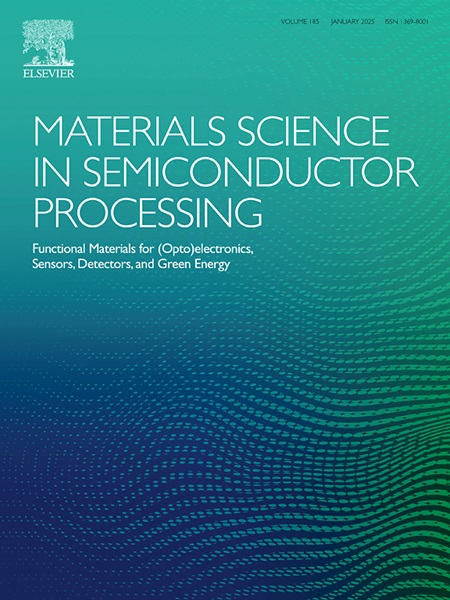Iron gallate-modified silk fibroin microspheres with nanostructured layer for effective antibacterial properties
IF 4.2
3区 工程技术
Q2 ENGINEERING, ELECTRICAL & ELECTRONIC
引用次数: 0
Abstract
The lack of antibacterial ability in tissue repair materials can lead to repair failure in clinical practice, especially in cases of infection. In this article, an in situ surface modification strategy has been proposed to endow useful biomaterials with excellent antibacterial performance by engineering the surface coordination interaction between iron ions and polyphenols. Through the controlled fabrication of a nanostructured iron gallate (GFe) composite layer on biocompatible silk fibroin microspheres (SFMSs), this study develops an antibiotic-free antimicrobial platform that enables reactive oxygen species (ROS)-mediated bactericidal activity while maintaining the native cell-migration-promoting characteristics of silk fibroin (SF). The resulting biodegradable biomaterial system presents a novel therapeutic strategy for tissue regeneration in infection-prone microenvironments. As a proof-of-concept, silk fibroin microspheres (SFMSs) are selected as the biomaterial matrix and gallic acid (GA) is chosen as the metal ligand materials. The SFMSs are synthesized using a polyvinyl alcohol (PVA) induced β folding method followed by the controlled growth of a layer of the iron gallate nanoparticles (GFe NPs) on its surface, resulting in the formation of GFe NPs modified silk fibroin microspheres (GFe@SFMSs). By harnessing the bacteria-adhesive properties of SF and the reactive oxygen species (ROS) generation catalyzed by Fe3+, GFe@SFMSs are capable of efficiently capturing and eliminating bacteria on their surface. The in vitro bacterial studies have demonstrated that GFe@SFMSs exhibit robust antibacterial activity against both Gram-positive and Gram-negative bacteria. The surface coordination engineering strategy between iron ions and polyphenols presents novel prospects for clinical antibacterial application.
具有纳米结构层的没食子酸铁修饰丝素微球具有有效的抗菌性能
组织修复材料缺乏抗菌能力,在临床实践中会导致修复失败,尤其是在感染的情况下。本文提出了一种原位表面修饰策略,通过设计铁离子与多酚之间的表面配位相互作用来赋予有用的生物材料具有优异的抗菌性能。通过在生物相容性丝素微球(SFMSs)上控制制备纳米结构的没食子酸铁(GFe)复合层,本研究开发了一种无抗生素的抗菌平台,使活性氧(ROS)介导的杀菌活性得以实现,同时保持丝素(SF)天然的促进细胞迁移的特性。由此产生的可生物降解生物材料系统为易感染微环境中的组织再生提供了一种新的治疗策略。作为概念验证,选择丝素微球(SFMSs)作为生物材料基质,选择没食子酸(GA)作为金属配体材料。SFMSs采用聚乙烯醇(PVA)诱导的β折叠方法合成,然后在其表面控制生长一层没食子酸铁纳米颗粒(GFe NPs),从而形成GFe NPs修饰的丝素微球(GFe@SFMSs)。通过利用SF的细菌粘附特性和Fe3+催化的活性氧(ROS)生成,GFe@SFMSs能够有效地捕获和消除其表面的细菌。体外细菌研究表明,GFe@SFMSs对革兰氏阳性和革兰氏阴性细菌均表现出强大的抗菌活性。铁离子与多酚的表面配位工程策略为临床抗菌应用提供了新的前景。
本文章由计算机程序翻译,如有差异,请以英文原文为准。
求助全文
约1分钟内获得全文
求助全文
来源期刊

Materials Science in Semiconductor Processing
工程技术-材料科学:综合
CiteScore
8.00
自引率
4.90%
发文量
780
审稿时长
42 days
期刊介绍:
Materials Science in Semiconductor Processing provides a unique forum for the discussion of novel processing, applications and theoretical studies of functional materials and devices for (opto)electronics, sensors, detectors, biotechnology and green energy.
Each issue will aim to provide a snapshot of current insights, new achievements, breakthroughs and future trends in such diverse fields as microelectronics, energy conversion and storage, communications, biotechnology, (photo)catalysis, nano- and thin-film technology, hybrid and composite materials, chemical processing, vapor-phase deposition, device fabrication, and modelling, which are the backbone of advanced semiconductor processing and applications.
Coverage will include: advanced lithography for submicron devices; etching and related topics; ion implantation; damage evolution and related issues; plasma and thermal CVD; rapid thermal processing; advanced metallization and interconnect schemes; thin dielectric layers, oxidation; sol-gel processing; chemical bath and (electro)chemical deposition; compound semiconductor processing; new non-oxide materials and their applications; (macro)molecular and hybrid materials; molecular dynamics, ab-initio methods, Monte Carlo, etc.; new materials and processes for discrete and integrated circuits; magnetic materials and spintronics; heterostructures and quantum devices; engineering of the electrical and optical properties of semiconductors; crystal growth mechanisms; reliability, defect density, intrinsic impurities and defects.
 求助内容:
求助内容: 应助结果提醒方式:
应助结果提醒方式:


